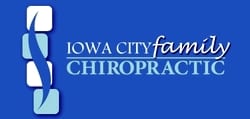Today’s modern woman has become much more knowledgeable in diet, nutrition, weight loss, exercise, sports and physical activity, and methods for maintaining wellness and general fitness – about which chiropractors have considerable expertise that they are eager to share. Chiropractic wellness programs are particularly well-suited to the special needs of pregnant women, new mothers, women who are overweight, who are in stressful situations, and others who need to protect and strengthen their bones, nerves, joints, muscles and overall health.
Millions of women rely on chiropractors because of the caring interaction that develops between patient and doctor and because of chiropractic’s effective combination of expert care, effective spinal adjustments, exercise and nutritional guidance, and lifestyle counseling.
Chiropractic offers demonstrated relief for many of the specific health challenges that affect women based on their female anatomy and the fact that the female body is designed to be able to bear children. Pregnancy and the menstrual cycle are centrally important health matters for women. Being pregnant, preparing for pregnancy, and recovering from childbirth are just some of the uniquely female issues. Pain during the menstrual period (dysmenorrhea), premenstrual syndrome (PMS), and chronic pelvic pain are among the distressing conditions which disrupt the otherwise healthy lives of many women.
Older women are much more likely than men to develop Alzheimer’s disease (which burdens the afflicted with near-total memory loss and reduced mental functioning) and osteoporosis (in which the bones become weak, brittle, and porous; the posture stooped with the shoulders rounded). These are just two of the problems of aging that women must be aware of and can take steps to prevent.
Women may get headaches during menstrual periods and pregnancy, as well as under ordinary circumstances. Women are more likely to be bothered enough by headache pain to seek a way to overcome it. Similarly, women are often victims of osteoarthritis (degenerative joint disease) and have a 200 to 300 percent greater chance than men of suffering rheumatoid arthritis.
